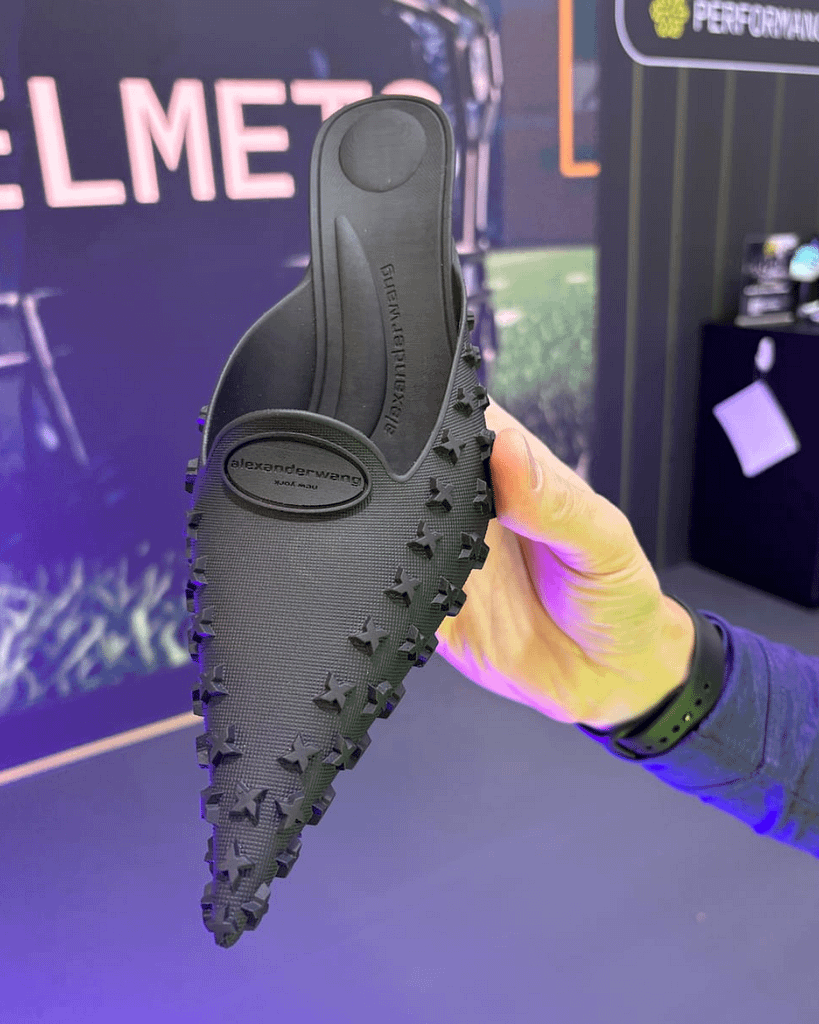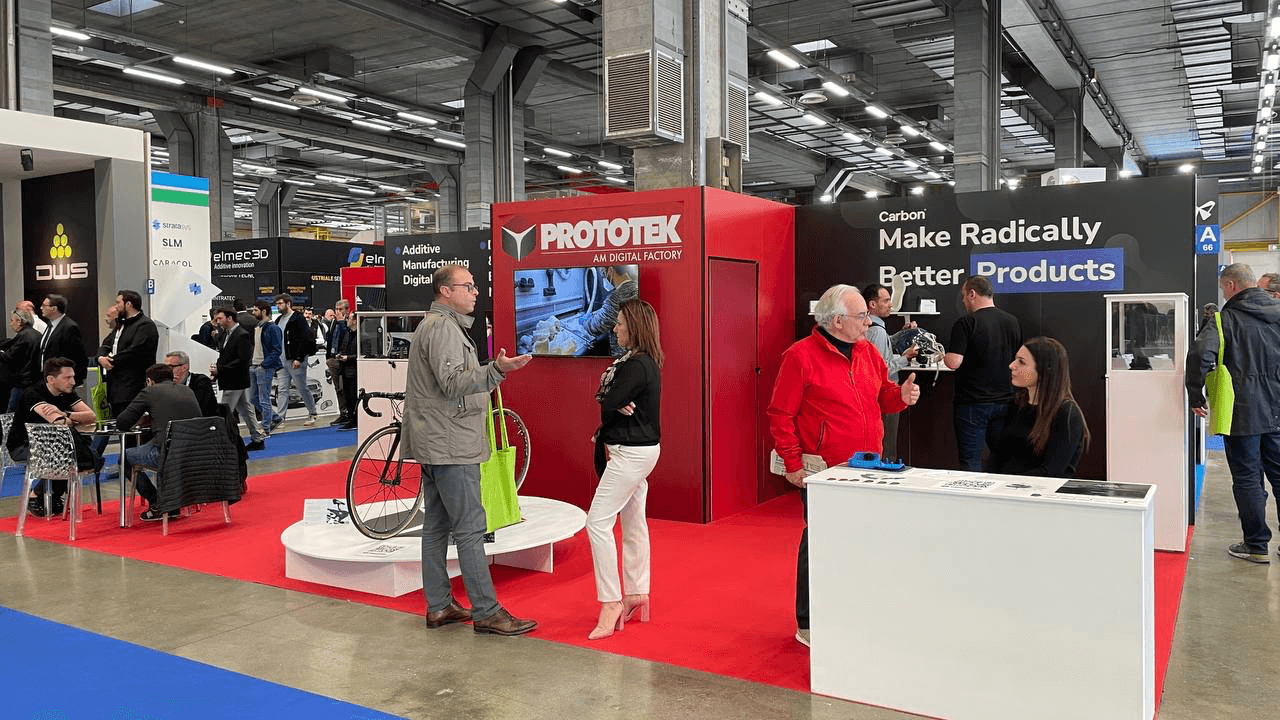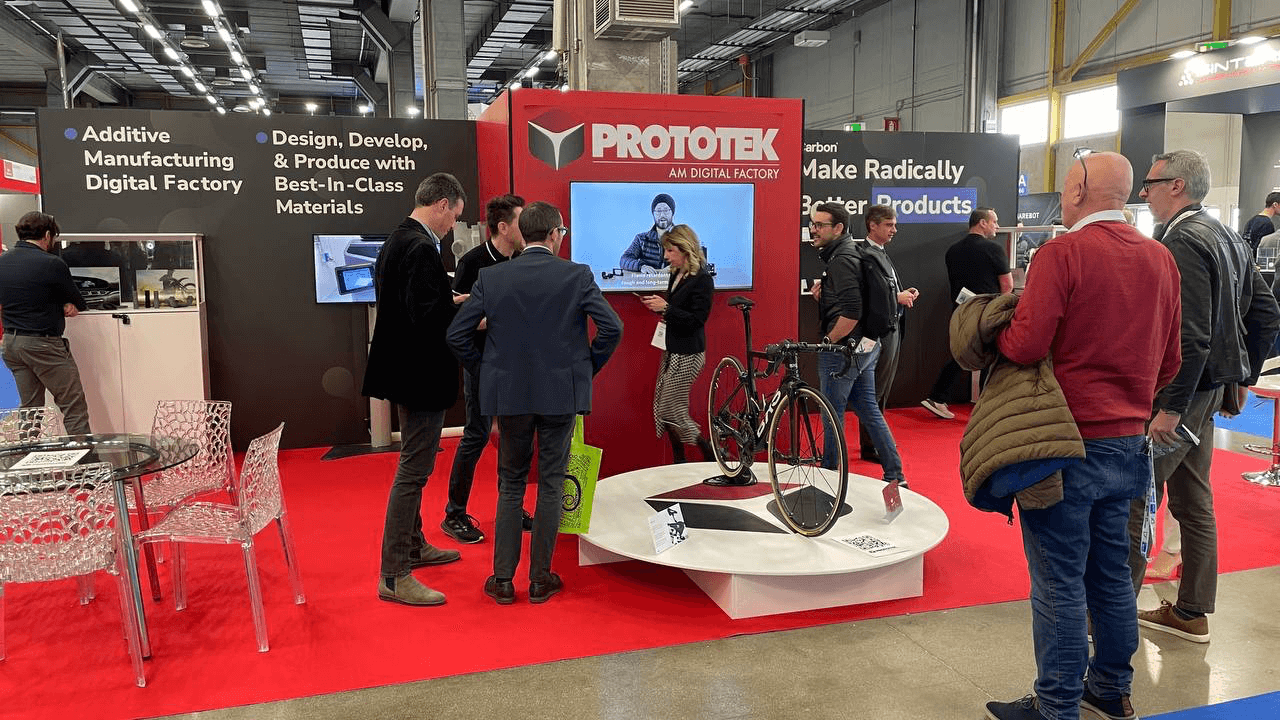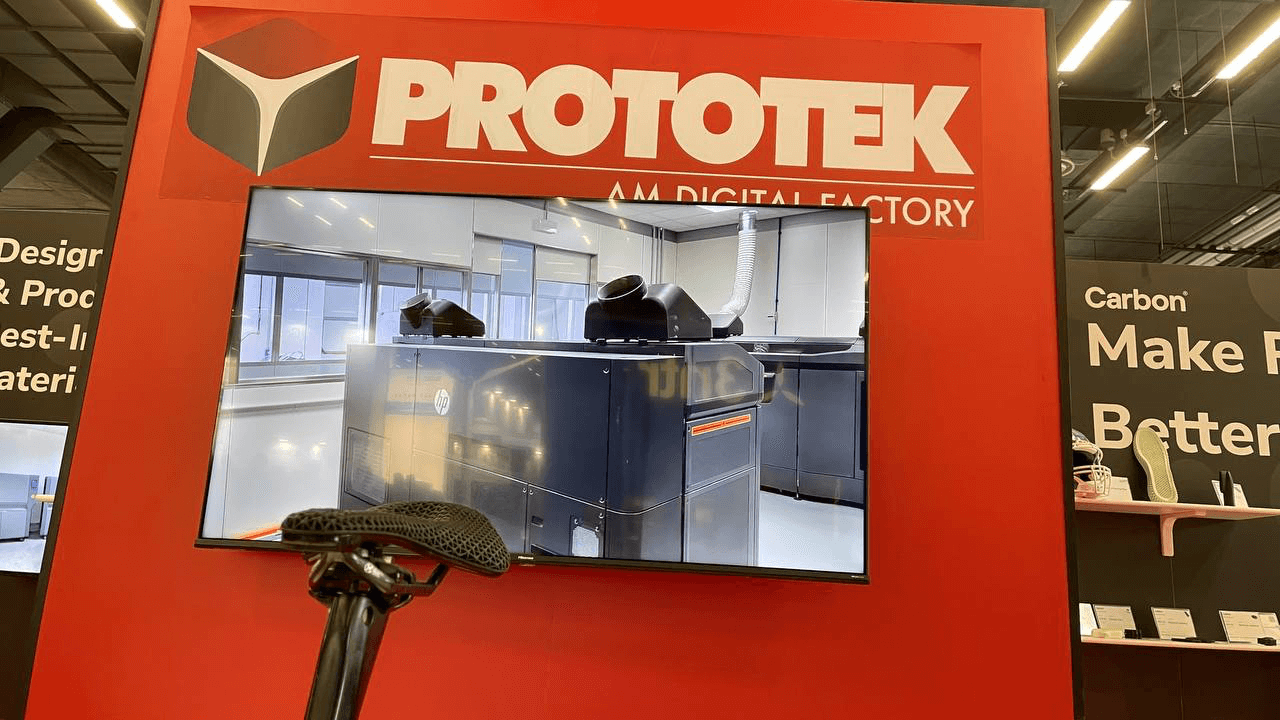Fashion is undergoing a profound transformation, driven by the integration of digital tools and advanced manufacturing technologies. Among the most groundbreaking developments, 3D printed shoes stand out as a revolutionary force capable of reshaping how footwear is designed, manufactured, and experienced. A prime example is The Griphoria Knittel Heels by Alexander Wang, created in collaboration with Carbon, HILOS Lab Design Studio, and our Prototek team.
The project debuted at New York Fashion Week 2025, immediately attracting the attention of industry experts, buyers, and press for its innovative construction, material sophistication, and futuristic aesthetic. It was later showcased at Formnext 2025, the world’s premier additive manufacturing event, highlighting its significance at the intersection of high fashion and advanced engineering.
A powerful collaboration: Carbon, HILOS, and our Prototek team
The Griphoria project is the result of an exceptional synergy between three leading players:
Carbon, the global pioneer of Digital Light Synthesis™ (DLS), known for producing high-performance elastomeric materials and geometrically complex structures.
HILOS, a US-based design studio specializing in digital footwear and innovative additive manufacturing workflows.
Our team, contributing structural engineering expertise, material consulting, and workflow optimization from concept to final product.
This collaboration transformed Alexander Wang’s creative vision into a fully functional, market-ready piece, an achievement rare in the field of 3D printed shoes.

Debut at New York Fashion Week 2025
The Griphoria Knittel Heels made their global premiere on one of the world’s most influential runways: NYFW 2025. Their sleek silhouette, sculptural lines, and precise detailing immediately stood out in the collection, highlighting the potential of 3D printed footwear to merge aesthetics with advanced manufacturing. Their presence confirmed that additive manufacturing is no longer an experimental tool but a legitimate means of producing high-fashion, ready-to-wear footwear.
Showcasing innovation at Formnext 2025
Following NYFW, the 3D printed shoes Griphoria were presented at Formnext 2025, the leading trade show for additive manufacturing. Showcasing a fashion product in an engineering-centric environment underlined a powerful message: additive manufacturing and fashion are converging. It demonstrated how high-precision industrial techniques can deliver not only prototypes but also fully functional luxury products.
Advanced materials and construction: the core of 3D printed shoes innovation
A core innovation of The Griphoria Knittel Heels is their “duo-print construction”, as described by HILOS. The shoe is made using only two Carbon materials:
EPU 46 — Upper and Insole
The upper and insole are printed in a single continuous piece with EPU 46, an elastomeric material that allows complex lattice geometries combining multiple hardnesses and densities in one build. This lattice structure provides:
Adaptive fit, molding to the wearer’s foot
Targeted cushioning for key pressure zones
Lightweight flexibility without compromising structural integrity
The upper is subtly textured for elegance and grip, while the insole is smooth and plush, providing comfort precisely where the foot needs it most.
RPU 70 — Heel
The heel is made with RPU 70, a rigid high-performance resin that ensures structural stability, durability, and precise detailing. This combination allows the shoe to balance engineering precision, comfort, and high-fashion aesthetics in a single design.
Comfort and ergonomics
The lattice structure in the EPU 46 insole is not just an aesthetic feature; it functions as a dynamic cushioning system. By varying the density and hardness across the footbed, it creates zones of soft support under the arch and heel while keeping the forefoot stable. The result is 3D printed shoes that truly deliver comfort on par with traditionally crafted luxury heels.
Sustainability and on-demand production
Another key advantage of the duo-print construction is its sustainability. Unlike traditional shoemaking, which often requires molds, adhesives, and multiple manufacturing steps, this approach produces the shoe on-demand with minimal material waste.
Carbon’s additive manufacturing process allows for precise material allocation, reducing excess and environmental impact while maintaining luxury quality standards.
Fashion meets technology
The Griphoria Knittel Heels prove that 3D printed shoes can achieve both high-fashion style and functional performance. Alexander Wang’s involvement underscores the maturity of additive manufacturing and its capacity to produce commercial, wearable products.
By combining advanced materials, digital design, and additive manufacturing, The Griphoria showcases a new frontier for luxury footwear, one where comfort, innovation, and sustainability coexist.
Conclusion: a milestone in 3D printed footwear
The Griphoria Knittel Heels by Alexander Wang set a new benchmark for 3D printed shoes. From NYFW to Formnext, they demonstrate that additive manufacturing is no longer a novelty but a fully viable approach to luxury footwear production.
By combining EPU 46 lattices, rigid RPU 70 heels, ergonomic design, and on-demand sustainable production, these heels redefine what it means to merge fashion and technology.
Request a consultation with Our Experts
document.addEventListener( 'wpcf7mailsent', function( event ) { location = '/grazie/'; }, false );








